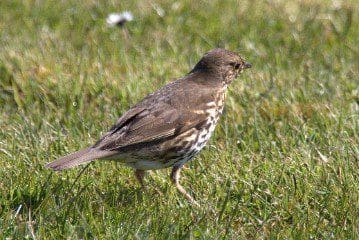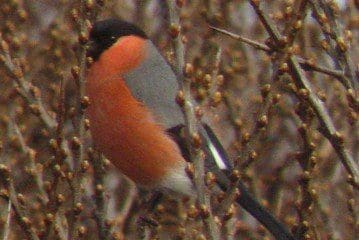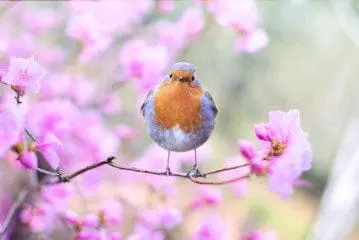Wild East Lothian - It's a great time to enjoy the local birdlife!
It could be wet, it could be snowy or it could be a beautiful crisp sunny day, you never can tell with February!
One thing we do know is that it’s a great month to listen out for early birdsong. Love is in the air and many birds are seeking partners to build their nests with. Much of the birdsong you will hear are male birds signalling that they have claimed their territory. This lets other males know to stay away and invite females to pair up. It’s an announcement of the bird’s status as “lord of the manor”, as it were.
There’s a huge variety of birdsong. The robin produces one of the most beautiful songs - a liquid, lyrical series of notes ranging in pitch and tone. The beauty of the song and the fact that robins sometimes sing at night (particularly near street lights) can fool people into thinking that they’ve heard a much rarer nightingale. The bullfinch song on the other hand, consists of several low-pitched whistles sounding fairly miserable. It’s almost like the bird is having a really bad day and just can’t be bothered singing! However, they are lovely looking birds, with bright red breasts and black cap.
It can be tricky to identify birdsong. One of the easiest is the great tit with a clear and repetitive two notes, the song is said to resemble a small schoolchild calling out “teacher, teacher, teacher!”



In a similar vein, song thrushes are also loud and repetitive. The song is a series of strident notes repeated three or four times. Song thrushes usually sing from a prominent perch, such as a tree top, making them relatively easy to spot. Thrushes are probably familiar to most, with their predominantly brown plumage and characteristic speckled breast.
Some birds don’t sing at all to stake their claim. Great spotted woodpeckers hammer their beaks against trees (and sometimes pipes or telegraph poles) to produce a rapid-fire drumming sound. These birds are not completely silent voice-wise, as they can also be heard making loud yipping calls.
Birdsong is definitely worth listening out for. It can brighten up even the drabbest of February days and, with a bit of practice, you’ll find it a valuable tool in helping to identify birds – especially those awkward ones which refuse to show themselves.
Thank you to East Lothian Council's Countryside Ranger Service.





















